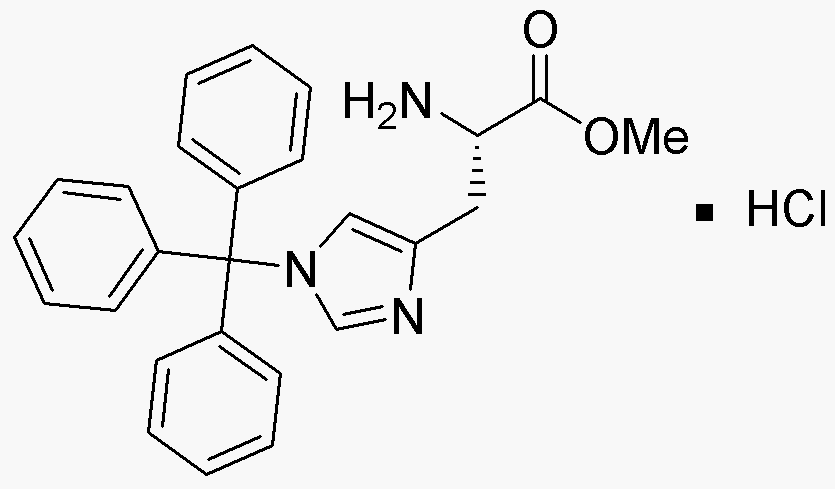Nim-Trityl-L-histidine methyl ester hydrochloride is widely utilized in research focused on:
- Peptide Synthesis: This compound serves as a valuable building block in the synthesis of peptides, particularly in the development of therapeutic agents targeting various diseases.
- Drug Development: It plays a crucial role in the pharmaceutical industry for creating new drugs, especially those aimed at modulating biological pathways involving histidine.
- Biochemical Research: Researchers use this compound to study histidine's role in enzyme activity and protein interactions, providing insights into metabolic processes.
- Diagnostic Applications: It is utilized in the development of diagnostic tools, particularly in assays that require specific interactions with histidine residues.
- Biotechnology: The compound is important in biotechnological applications, including the design of biosensors that detect histidine-related biochemical changes.
General Information
Properties
Safety and Regulations
Applications
Nim-Trityl-L-histidine methyl ester hydrochloride is widely utilized in research focused on:
- Peptide Synthesis: This compound serves as a valuable building block in the synthesis of peptides, particularly in the development of therapeutic agents targeting various diseases.
- Drug Development: It plays a crucial role in the pharmaceutical industry for creating new drugs, especially those aimed at modulating biological pathways involving histidine.
- Biochemical Research: Researchers use this compound to study histidine's role in enzyme activity and protein interactions, providing insights into metabolic processes.
- Diagnostic Applications: It is utilized in the development of diagnostic tools, particularly in assays that require specific interactions with histidine residues.
- Biotechnology: The compound is important in biotechnological applications, including the design of biosensors that detect histidine-related biochemical changes.
Documents
Safety Data Sheets (SDS)
The SDS provides comprehensive safety information on handling, storage, and disposal of the product.
Product Specification (PS)
The PS provides a comprehensive breakdown of the product’s properties, including chemical composition, physical state, purity, and storage requirements. It also details acceptable quality ranges and the product's intended applications.
Certificates of Analysis (COA)
Search for Certificates of Analysis (COA) by entering the products Lot Number. Lot and Batch Numbers can be found on a product’s label following the words ‘Lot’ or ‘Batch’.
*Catalog Number
*Lot Number
Certificates Of Origin (COO)
This COO confirms the country where the product was manufactured, and also details the materials and components used in it and whether it is derived from natural, synthetic, or other specific sources. This certificate may be required for customs, trade, and regulatory compliance.
*Catalog Number
*Lot Number
Safety Data Sheets (SDS)
The SDS provides comprehensive safety information on handling, storage, and disposal of the product.
DownloadProduct Specification (PS)
The PS provides a comprehensive breakdown of the product’s properties, including chemical composition, physical state, purity, and storage requirements. It also details acceptable quality ranges and the product's intended applications.
DownloadCertificates of Analysis (COA)
Search for Certificates of Analysis (COA) by entering the products Lot Number. Lot and Batch Numbers can be found on a product’s label following the words ‘Lot’ or ‘Batch’.
*Catalog Number
*Lot Number
Certificates Of Origin (COO)
This COO confirms the country where the product was manufactured, and also details the materials and components used in it and whether it is derived from natural, synthetic, or other specific sources. This certificate may be required for customs, trade, and regulatory compliance.


